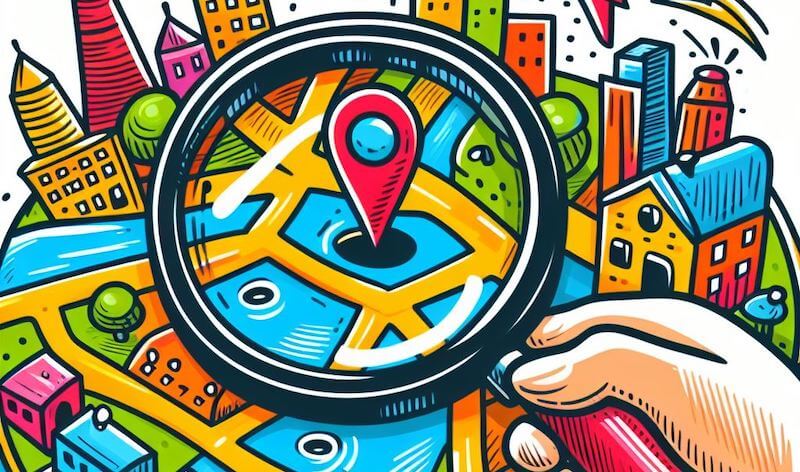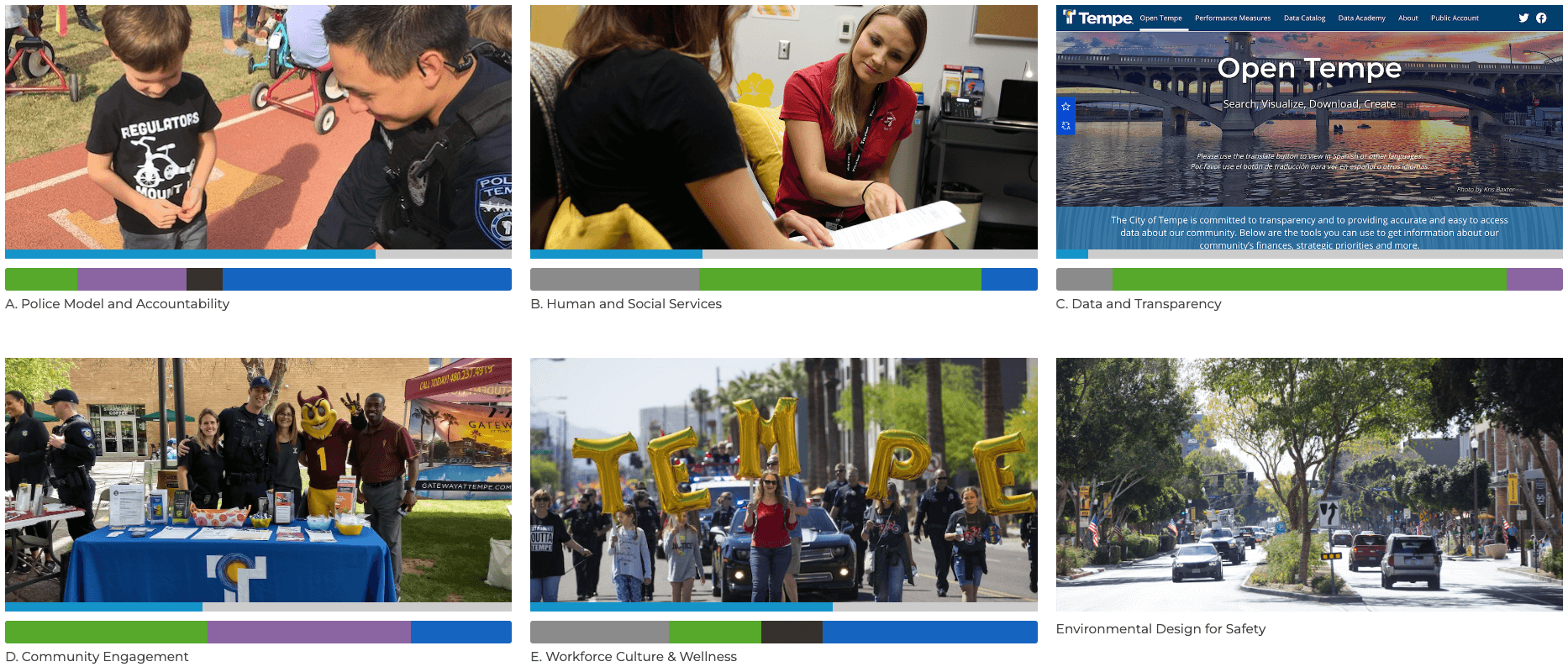
Contents
Local governments today have a lot of complex, and sometimes competing, priorities to juggle. There’s capital improvement projects, public transportation initiatives, public parks master plans, equity concerns, climate action, affordable housing programs—and that’s hardly an exhaustive list—all while trying to build trust with their communities.
In working to create vibrant, resilient, and inclusive communities, involving local residents in the decision-making process is increasingly important.
Community visioning is a collaborative approach to planning that treats community members as change-agents in their own right. It means bringing them into the process of determining the north-star of a community’s strategic path.
This approach ultimately fosters stronger connections within communities, but also ensures that strategic initiatives undertaken by local governments are desirable and aligned with the values and aspirations of the people they serve.
What is a community vision?
Community visioning (sometimes called collaborative or participatory planning) is, at its best, a multifaceted process that involves not only envisioning the overall future of a community, but also translating community aspirations into a clear vision that goes on to guide strategic planning efforts, and decision-making.
A community vision is what emerges after a visioning process. It begins with the exploration of residents’ goals, objectives, and values. By providing a platform for open and honest dialogue, municipalities empower residents to shape the future of their communities.
Put simply: community visioning is a formalized process that engages and empowers residents to have a voice in how they want their community to look in the future.
The process of creating a community vision
Establishing a community vision might include some of the following elements:
- Facilitation of Inclusive Workshops and Meetings: Leading local governments often organize inclusive workshops, town hall meetings, and focus groups where residents and community leaders can gather to share their ideas, aspirations, and concerns. These meetings provide a platform for open dialogue and collaboration, ensuring that a diverse range of voices is heard in the visioning process.
- Utilization of Digital Engagement Tools: In addition to traditional in-person meetings, many forward-thinking local government teams leverage digital engagement tools and platforms to reach a broader audience and collect feedback from residents who may not be able to attend physical events. Embracing such tools can improve democratic outreach. Online surveys, interactive maps, and social media campaigns enable widespread participation and ensure that the visioning process is accessible to all members of the community.
- Working With Expert Consultants: Many local governments who embark on community visioning work collaborate with planning consultants, community engagement specialists, and professional facilitators to help with community visioning processes. These consultants help design and run workshops, analyze data, and synthesize community input into actionable recommendations, ensuring that the visioning process is well-designed, fair, and effectively executed.
- Creation of Visioning Materials and Resources: To support community engagement efforts, it is valuable to develop visioning materials and resources such as visioning guides, informational videos, public-facing dashboards, and interactive websites. These resources help residents understand the purpose and objectives of the visioning process, provide context for discussions, and encourage meaningful participation.
- Integration of Community Vision into Planning: The vision statement that emerges through the community visioning process, along with the priorities identified, should go on to serve as guiding principles for land use planning, infrastructure investments, economic development initiatives, budget allocation, and many other policy and programming decisions, ensuring that the community’s aspirations are reflected in future development and growth strategies. We strongly recommend the use of public dashboards as a way to show residents progress made toward a shared community vision.
Strategic Plan Co-Creation: City of Bloomington, Minnesota
A shining example of successful community visioning can be found in Bloomington, Minnesota.
In their efforts to create a new strategic plan for the city, they created “Bloomington. Tomorrow. Together,” a planning initiative that involved actively engaging residents through a variety of channels, including public forums, surveys, and digital platforms.
More than 400 voices from diverse backgrounds were included in the city’s “core planning process”. City leaders described this process as a partnership with the community that gave them the guidance to allocate resources according to residents’ priorities.
Together, the city and the community created a mission statement, a set of core values, and three strategic focus areas.
Action teams then met around each strategic objective and an internal measurement team put together recommendations for how city staff should measure progress. At every step, the community was informed and asked for input, before the plan was presented and approved by the City Council.
These efforts laid the foundation for the city’s new strategic plan, which takes them up to the year 2030. The plan includes actions for improving holistic health of the community, creating a welcoming community, and driving equitable economic growth.
The City of Bloomington’s inclusive approach enabled the city to gain valuable insights into community priorities and values, ultimately resulting in a strategic plan that truly reflects the collective vision of Bloomington’s residents.
Watch one of the latest “Bloomington. Tomorrow. Together” community updates below!
Three Key Ingredients For Community Visioning
As you embark on your own community visioning journey, there are three main ingredients that should be taken into account.
Your community visioning process must be inclusive
Inclusivity is paramount.
Efforts should be made to ensure that diverse voices are heard and represented, ensuring that the resulting vision is truly reflective of the entire community. Consider diversity in many aspects, including age, gender, race, geography, homeowners as well as renters, business owners as well as employees, residents who are unemployed, and those with disabilities, amongst other factors.
This is where digital engagement alongside in-person visioning processes should help in reaching all demographics. Creating an accessible process is also critical.
Your community visioning process should foster learning and dialogue
It’s important that residents feel as though their thoughts and concerns are actually being heard and taken into consideration. However, this can be a tricky balance when there are governance processes, standards, or laws that residents are not aware of or do not fully understand.
In some cases, this can lead to frustration during a visioning process.
Having an outreach and educational process is a great way to support constructive dialogue and work toward a consensus.
By creating space for open, honest, and educational conversations (in both directions), municipalities can cultivate a sense of ownership and belonging among residents.
Your community visioning process should be transparent
The final ingredient is transparency. It is difficult to get community buy-in if your community does not trust you to listen, empathize, or to act on their input.
Consider this: Are there things that you, as a city or county government, may need to acknowledge? Are there biases that have crept into previous community plans? Are there tangible steps you can take in addressing concerns around trust? This is critical to maintaining the integrity of the visioning process. By keeping residents informed and involved every step of the way, municipalities can foster trust and confidence in the decision-making process.
Building Trust Through Community Visioning: City of Tempe, Arizona
It is tempting during times of struggle to withdraw from community feedback, when the reality is that those are often the times we need to be engaging the most.
In 2020, city leaders in Tempe led an empathic, intentional, and engaged community visioning process to guide transformative action on public safety and to cultivate trust between residents and law enforcement. Their goal? Community safety initiatives that resonated with a nuanced understanding of inclusivity and social dynamics.
Wydale Holmes, Director of the Innovation and Strategic Management Office describes the process in Reimagining Community Safety: A Case Study in Tempe, Arizona:
“We held seven public sessions with task force members, and included some city staff as well …They ran from October of 2020 to June of 2021. During these sessions, we held what we called “focused conversations” around community, policing, and trust, and from there we went about soliciting recommendations from our community that they wanted us to consider in regards to changing and improving the relationship between the city and its residents.”
Forming a unique task force under the stewardship of Mayor Cory Woods, the city embarked on a journey to foster dialogue, transparency, and ultimately trust within their neighborhoods. Their story is inspiring and timely. It is also an example of community visioning at its most powerful.
Tempe’s resulting Community Safety Strategic Plan is a testament to the power of community-driven solutions and the art of bridging divides. It’s a narrative woven with threads of empathy and foresight, painting a portrait of a city committed to nurturing safety, trust, and solidarity among its residents.
The Impact of Community Visioning
Beyond the creation of a shared roadmap, community visioning has far-reaching benefits. By engaging residents from day one, municipalities can foster inclusion, alignment, trust, and belonging within communities. Collaborative goal-setting helps with decision-making down the road and gaining support for new initiatives that tie back to a shared plan and vision.
Get the Guide ↓
Tools like Envisio offer municipalities a powerful way to visualize and operationalize a community-driven plan. Envisio empowers municipalities to engage residents, track progress, and transform vision into tangible outcomes. Check out our guide on building engaging community dashboards!








